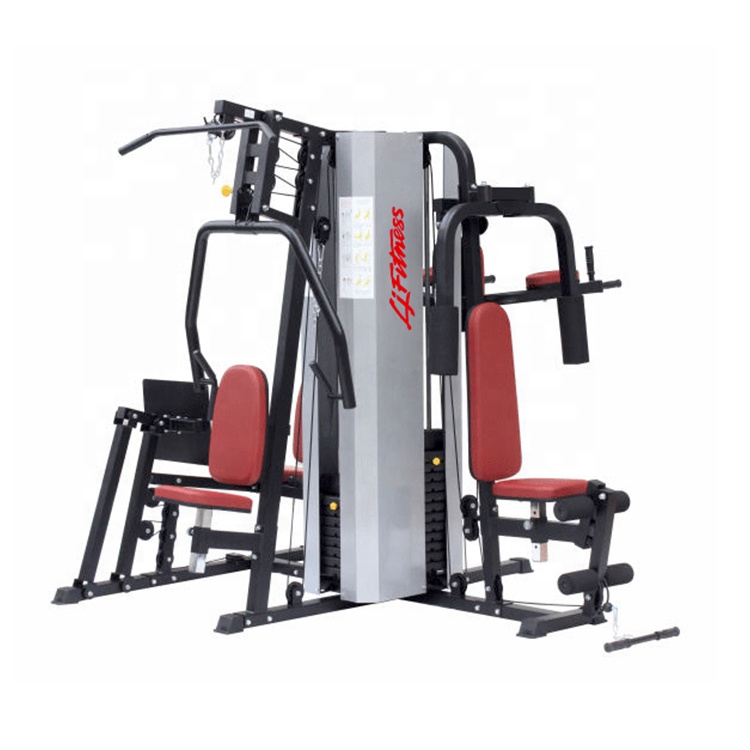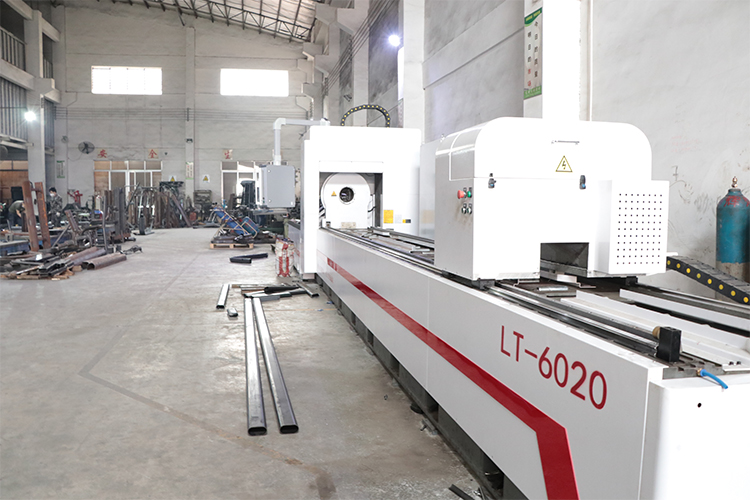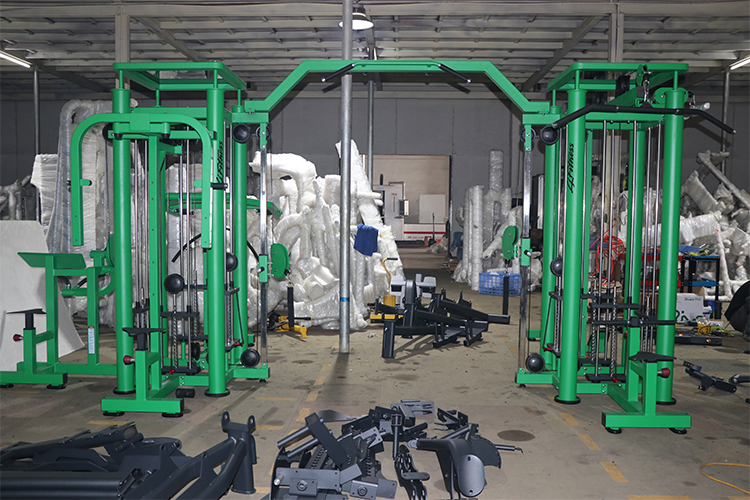Commercial Gym Equipment refers to exercise equipment that is specifically designed for use in commercial gyms and fitness centers. This equipment is typically built to withstand heavy use and is durable enough to handle a high volume of users. Examples of commercial gym equipment include:
1. Treadmills: These are motorized machines that allow users to walk, jog, or run in place.
2. Elliptical trainers: These machines simulate the motion of walking or running without the impact on joints.
3. Stationary bikes: These bikes allow users to cycle indoors and provide a cardiovascular workout.
4. Strength training machines: These machines target specific muscle groups and provide resistance for strength training exercises.
5. Free weights: These include dumbbells, barbells, and weight plates that allow users to perform a wide range of exercises.
6. Cable machines: These machines use a pulley system and cables to provide resistance for various exercises.
7. Rowing machines: These machines simulate the motion of rowing a boat and provide a full-body workout.
8. Functional training equipment: This includes items like kettlebells, medicine balls, and resistance bands that are used for functional training exercises.
9. Cardio machines: These include stair climbers, step machines, and cross-trainers that provide cardiovascular workouts.
10. Multi-station gyms: These machines combine multiple exercise stations into one unit, allowing users to perform a variety of exercises.
Commercial gym equipment is typically designed to be adjustable, comfortable, and user-friendly to accommodate a wide range of individuals with different fitness levels and goals.Are multi gyms good for weight loss?Yes, multi gyms can be effective for weight loss as they offer a variety of exercises that target different muscle groups and can help burn calories and increase overall fitness. However, weight loss ultimately depends on a combination of regular exercise and a balanced diet.Are multi gyms better than free weights? Both multi gyms and free weights have their advantages and disadvantages. It depends on your fitness goals, preferences, and experience level.
Multi gyms are a good option for beginners or those who want to save time and space. They allow you to perform a variety of exercises in one machine, which is convenient and efficient. They also provide a controlled range of motion, which can be helpful for those who are new to weightlifting.
On the other hand, free weights offer more versatility and allow for a greater range of motion. They also require more stability and coordination, which can help improve overall strength and balance. Additionally, free weights can be used for functional exercises that mimic real-life movements.
Ultimately, the choice between multi gyms and free weights depends on your individual fitness goals and preferences. Some people may prefer the convenience and safety of multi gyms, while others may prefer the versatility and challenge of free weights.ls it cheaper to go to a gym or make a home gym? The cost of going to a gym or making a home gym depends on various factors such as the equipment you need, the gym membership fees, and the cost of setting up a home gym. In general, setting up a home gym can be more expensive initially, but it can save you money in the long run.
If you go to a gym, you will have to pay a monthly or yearly membership fee, which can range from $20 to $100 per month, depending on the gym's location, facilities, and services. You will also have to pay for transportation costs to and from the gym.
On the other hand, if you make a home gym, you will need to invest in equipment, such as weights, a treadmill, or a stationary bike. The cost of equipment can vary widely, depending on the quality and quantity of equipment you need. You will also need to consider the cost of setting up a space for your gym, such as flooring, mirrors, and lighting.
In conclusion, whether it is cheaper to go to a gym or make a home gym depends on your individual circumstances and preferences. If you prefer the social aspect of working out at a gym and don't mind paying a monthly fee, then going to a gym may be the better option for you. However, if you prefer the convenience and privacy of working out at home and are willing to invest in equipment, then making a home gym may be the better option.Does a home gym add value to your home?Yes, a home gym can add value to your home, especially if it is well-equipped and designed. Homebuyers are increasingly seeking properties with home gyms, as it saves them the cost and time of joining a gym. Additionally, a home gym can also increase the overall appeal of your home, making it more attractive to potential buyers. However, the value added may vary depending on the location, size, and quality of the home gym.How do l choose a multi gym? 1. Size and Space: Consider the space you have available for the multi-gym and the size of the machine you want to purchase. Make sure it fits comfortably in your home gym or workout space.
2. Weight Stack: Check the weight stack to ensure it provides enough resistance for your fitness level and goals. A weight stack with a range of weights is ideal for a full-body workout.
3. Number of Exercises: Look for a multi-gym that offers a variety of exercises for a full-body workout. The more exercises the machine can perform, the better.
4. Quality and Durability: Check the quality and durability of the machine to ensure it can withstand regular use and last for years.
5. Price: Consider your budget when choosing a multi-gym. Multi-gyms can range in price from a few hundred dollars to several thousand dollars, so choose one that fits your budget.
6. Brand Reputation: Choose a multi-gym from a reputable brand with a good reputation for quality and customer service.
7. User Reviews: Read user reviews and ratings to see what other people think of the machine. This can help you make an informed decision.







